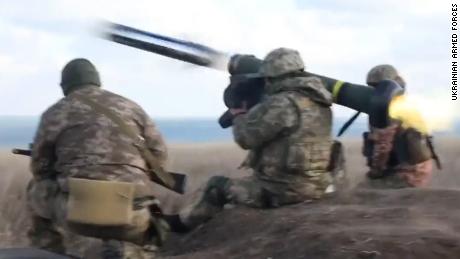How long can Ukraine hold out in the war for the skies?
Of all the surprises that President Vladimir Putin has encountered since he invaded Ukraine last month, perhaps the biggest has been that Russia is yet to gain air superiority.
On paper,
Russia's military prowess implies that along with quick ground
victories, the Russian air force should have been able swiftly to take
control of the skies. Going into the conflict, Russia's 1,391 aircraft
to Ukraine's 132 -- complemented by 948 helicopters to Kyiv's 55 -- have
yet to give Putin the kind of aerial dominance required to eliminate
Ukraine's resistance. Russia's overall defense budget of $45.8 billion
is almost 10 times that of its neighbor.
Experts
ranging from former air force personnel to government officials believe
that Russia's failure comes down to a combination of poor preparation
by Moscow, a clever use of resources based on intelligence by Ukraine
and the targeted donations of arms from Western allies to Ukraine.
"As
far as I understand, they were able to save a large part of their air
force by moving planes from airfields before the Russians destroyed
them, based on intelligence ahead of attacks," says Gen. Riho Terras, a
former commander of the Estonian Defense Forces.
Sophy
Antrobus, research associate at Freeman Air and Space Institute and
former officer in the UK's Royal Air Force, agrees that in the early
stages of the war, Ukraine appeared to take intelligent steps that are
now paying dividends.
"They've
been clever in that they didn't deploy all of their resources that
could take down Russian aircraft. This possibly led Russia into a false
sense of security, and Ukraine has been able to keep defending its air
while reinforcements from allies arrive," she says.
Those
reinforcements include S-300 anti-aircraft systems, Stingers and
Javelin missiles that have been used by Ukraine so far. The presence of
such missile systems marks a dramatic upgrade for Ukraine.
Rep.
Mike McCaul, the ranking member on the US House Foreign Affairs
Committee told CNN that S-300s, which are Russian-made, have
"higher-altitude" capability than Stinger missiles, which the US has
also sent to Ukraine.
"The
S-300s are the high-altitude -- sort of like our Patriot battery of
missiles -- anti-aircraft system. The fact that they are in country and
more are coming is going to be very effective."
While these missile
systems might be effective, there is still a question mark over how long
Ukraine can hold off Russia -- both in the air and on the ground.
High risk to Russia
It
remains the case that Russia's military is much larger, that NATO is
unwilling to get directly involved or set up a no-fly zone and that, the
longer the war drags on, the more Ukraine will rely on its allies to
provide lethal weapons.
How
long it lasts depends in part on how much Putin is willing to throw at
winning the conflict -- and whether he wants to repeat the tactics used
by Russian forces in support of Syrian President Bashar al-Assad against
rebels in his country's civil war, Antrobus says.
"Is
he willing to emulate Aleppo and commit atrocities so visible to the
rest of the world? The worst days of the war in Syria came years into
the conflict, and sadly people were just paying less attention. This
conflict is only three weeks old," she says.
If
Putin were willing to go to the extremes seen in Syria, Antrobus points
out, it would come with a much higher risk to Russia, "because of the
anti-aircraft weaponry Ukraine has and is being supplied with."
Russia
must consider its medium-long term, she points out: how much in terms
of equipment and personnel are they willing to lose at the cost of other
interests.
"Placing
his own fighters in that level of danger and burning through Russian
resources while doing so will be very hard to justify," she says.
What would be a tolerable and sustainable loss to control Ukraine's skies is also an unknown.
Justin
Bronk, airpower and technology research fellow at the London-based
Royal United Services Institute, doesn't believe that Russia can "attain
meaningful air superiority over most of the country without taking
unsustainable losses."
"There
has been little evidence shown that the Russian air force is capable of
the large-scale complex air operations that this task would require."
Russia's
battle for Ukraine's skies is in some respects also reliant on what
parts of the ground it controls. Terras says that as long "as Russia is
still launching most of its attacks from outside of Ukraine, they are
limited in how much of Ukraine's enormous airspace they can
realistically dominate."
This
means that Russia is, in many cases, having to launch bombers from
outside Ukraine's borders in order to carry out missile strikes against
targets inside Ukraine.
Terras adds that Ukrainian forces have so far been wise in selecting which strategic parts of the country to defend.





No comments